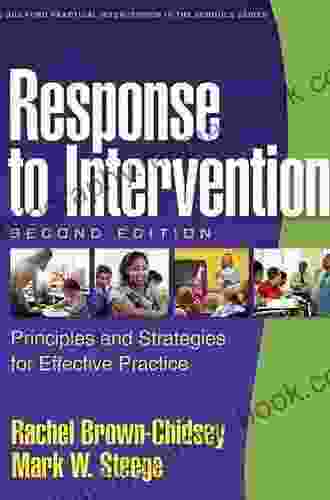Addressing Race and Socioeconomic Disparities in Education: A Comprehensive Approach

Educational equity is a fundamental pillar of a just and thriving society. However, persistent disparities based on race and social class continue to plague our schools, creating significant barriers to student success. To address these inequities, we need a comprehensive and multifaceted approach that tackles the root causes of these disparities.
This article will delve into the complexities of race and social class in education, explore evidence-based strategies for promoting equity, and outline policy recommendations to create a more inclusive and equitable educational system for all students.
5 out of 5
| Language | : | English |
| File size | : | 109753 KB |
| Text-to-Speech | : | Enabled |
| Enhanced typesetting | : | Enabled |
| Word Wise | : | Enabled |
| Screen Reader | : | Supported |
| Print length | : | 416 pages |
Understanding the Disparities
Racial and socioeconomic disparities in education manifest in various ways:
- Achievement gaps: Students from marginalized racial and socioeconomic backgrounds consistently score lower on standardized tests and graduate at lower rates compared to their White and affluent peers.
- School funding inequities: Schools in low-income and minority communities often receive less funding than schools in wealthier areas, leading to disparities in resources such as facilities, teachers, and technology.
- Disproportionate discipline: Students of color are more likely to be suspended or expelled from school for the same offenses as their White peers, creating a school-to-prison pipeline.
- Teacher diversity gap: The teaching force is overwhelmingly White, despite the growing diversity of the student population, which can lead to cultural insensitivity and a lack of understanding of students' experiences.
Root Causes of Disparities
The disparities in education are not simply the result of individual factors, but rather a reflection of systemic issues that perpetuate inequities:
- Historical racism: Centuries of discrimination and segregation have created a legacy of inequality that continues to impact education today.
- Structural poverty: Poverty is a major barrier to educational success, as it limits access to resources, stable housing, and quality nutrition.
- Institutional bias: Unconscious biases and stereotypes in education institutions contribute to inequitable treatment of students from marginalized groups.
- Lack of culturally responsive pedagogy: Many schools fail to incorporate the cultural backgrounds and experiences of students into their curriculum and teaching methods.
Strategies for Promoting Equity
Addressing the root causes of education disparities requires a comprehensive approach that includes both school-based and policy-level interventions:
School-Based Strategies
- Culturally responsive pedagogy: Adapt teaching methods and curricula to reflect the diverse cultural backgrounds and experiences of students.
- Implicit bias training: Help educators identify and address unconscious biases that may impact their interactions with students.
- Restorative justice practices: Implement alternative discipline approaches that focus on repairing harm and preventing recidivism, reducing disproportionate suspensions and expulsions.
- Student support services: Provide individualized support services, such as tutoring, mentoring, and counseling, to students who face challenges.
Policy-Level Strategies
- School funding reform: Ensure equitable funding for all schools, regardless of location or socioeconomic status.
- Early childhood education investment: Expand access to high-quality early childhood education programs, as they have been shown to significantly improve educational outcomes.
- Teacher diversity initiatives: Recruit and support a diverse teaching force that reflects the student population.
- Community engagement: Partner with community organizations and stakeholders to address the social and economic factors that impact educational success.
Policy Recommendations
To create a more equitable education system, we need strong policies that address the root causes of disparities:
- Enact anti-discrimination legislation: Protect students from discrimination on the basis of race, ethnicity, or socioeconomic status.
- Increase funding for schools in low-income communities: Provide additional resources to address the needs of students from marginalized backgrounds.
- Expand access to affordable housing, healthcare, and nutrition: Address the social and economic factors that contribute to education disparities.
- Diversify the teacher workforce: Implement policies and programs to recruit and retain teachers from diverse backgrounds.
Addressing race and social class disparities in education is a complex and ongoing challenge. However, by implementing a comprehensive approach that includes school-based strategies, policy-level interventions, and advocacy for policy change, we can create a more equitable education system for all students.
By valuing diversity, promoting inclusivity, and ensuring that all students have access to a quality education, we can unlock the full potential of our society and create a more just and equitable world.
References
- National Education Association. (2020). The State of Equity in K-12 Public Education. https://www.nea.org/advocating-for-change/new-from-nea/state-equity-k-12-public-education
- Southern Poverty Law Center. (2021). Teaching Hard History: American Slavery. https://www.splcenter.org/teaching-hard-history/teaching-about-slavery
- The Century Foundation. (2020). The Root Causes of the Racial Achievement Gap: Evidence and Policy Implications. https://tcf.org/content/report/root-causes-racial-achievement-gap-evidence-policy-implications/
5 out of 5
| Language | : | English |
| File size | : | 109753 KB |
| Text-to-Speech | : | Enabled |
| Enhanced typesetting | : | Enabled |
| Word Wise | : | Enabled |
| Screen Reader | : | Supported |
| Print length | : | 416 pages |
Do you want to contribute by writing guest posts on this blog?
Please contact us and send us a resume of previous articles that you have written.
 Top Book
Top Book Novel
Novel Fiction
Fiction Nonfiction
Nonfiction Literature
Literature Paperback
Paperback Hardcover
Hardcover E-book
E-book Audiobook
Audiobook Bestseller
Bestseller Classic
Classic Mystery
Mystery Thriller
Thriller Romance
Romance Fantasy
Fantasy Science Fiction
Science Fiction Biography
Biography Memoir
Memoir Autobiography
Autobiography Poetry
Poetry Drama
Drama Historical Fiction
Historical Fiction Self-help
Self-help Young Adult
Young Adult Childrens Books
Childrens Books Graphic Novel
Graphic Novel Anthology
Anthology Series
Series Encyclopedia
Encyclopedia Reference
Reference Guidebook
Guidebook Textbook
Textbook Workbook
Workbook Journal
Journal Diary
Diary Manuscript
Manuscript Folio
Folio Pulp Fiction
Pulp Fiction Short Stories
Short Stories Fairy Tales
Fairy Tales Fables
Fables Mythology
Mythology Philosophy
Philosophy Religion
Religion Spirituality
Spirituality Essays
Essays Critique
Critique Commentary
Commentary Glossary
Glossary Bibliography
Bibliography Index
Index Table of Contents
Table of Contents Preface
Preface Introduction
Introduction Foreword
Foreword Afterword
Afterword Appendices
Appendices Annotations
Annotations Footnotes
Footnotes Epilogue
Epilogue Prologue
Prologue Alan Sillitoe
Alan Sillitoe Jennifer Kropf
Jennifer Kropf Eiichiro Oda
Eiichiro Oda Bengt Jangfeldt
Bengt Jangfeldt Rob Leininger
Rob Leininger Antonia Cameron
Antonia Cameron Mark Adams
Mark Adams Larry Slawson
Larry Slawson Andrea D Price
Andrea D Price Mary Wood
Mary Wood Matt Larkin
Matt Larkin Natasha Madison
Natasha Madison Rae Armantrout
Rae Armantrout Rachel Brown Chidsey
Rachel Brown Chidsey Jason Simmons
Jason Simmons Aaron Tucker
Aaron Tucker Lichelle Slater
Lichelle Slater Ilona Andrews
Ilona Andrews Kennette Thigpen
Kennette Thigpen Gordon H Chang
Gordon H Chang
Light bulbAdvertise smarter! Our strategic ad space ensures maximum exposure. Reserve your spot today!

 Jerry HayesHootie Ugly Christmas Sweater Mini Cross Stitch Pattern: Deck the Halls with...
Jerry HayesHootie Ugly Christmas Sweater Mini Cross Stitch Pattern: Deck the Halls with... Dwight BlairFollow ·7.3k
Dwight BlairFollow ·7.3k Alan TurnerFollow ·12.2k
Alan TurnerFollow ·12.2k Charles ReedFollow ·19.9k
Charles ReedFollow ·19.9k Neil GaimanFollow ·19.4k
Neil GaimanFollow ·19.4k Yasushi InoueFollow ·8.3k
Yasushi InoueFollow ·8.3k Emanuel BellFollow ·7.7k
Emanuel BellFollow ·7.7k Hank MitchellFollow ·15.1k
Hank MitchellFollow ·15.1k Todd TurnerFollow ·2.4k
Todd TurnerFollow ·2.4k

 Patrick Rothfuss
Patrick RothfussHow to Make a Million Dollars: No Secrets
Making a million dollars...

 Robert Heinlein
Robert HeinleinResponse to Intervention, Second Edition: RTI in Practice
A Comprehensive Resource for Educators and...

 Timothy Ward
Timothy WardUnravel the Gripping Assassination Thriller Bursting with...
Prepare yourself for a...
5 out of 5
| Language | : | English |
| File size | : | 109753 KB |
| Text-to-Speech | : | Enabled |
| Enhanced typesetting | : | Enabled |
| Word Wise | : | Enabled |
| Screen Reader | : | Supported |
| Print length | : | 416 pages |















